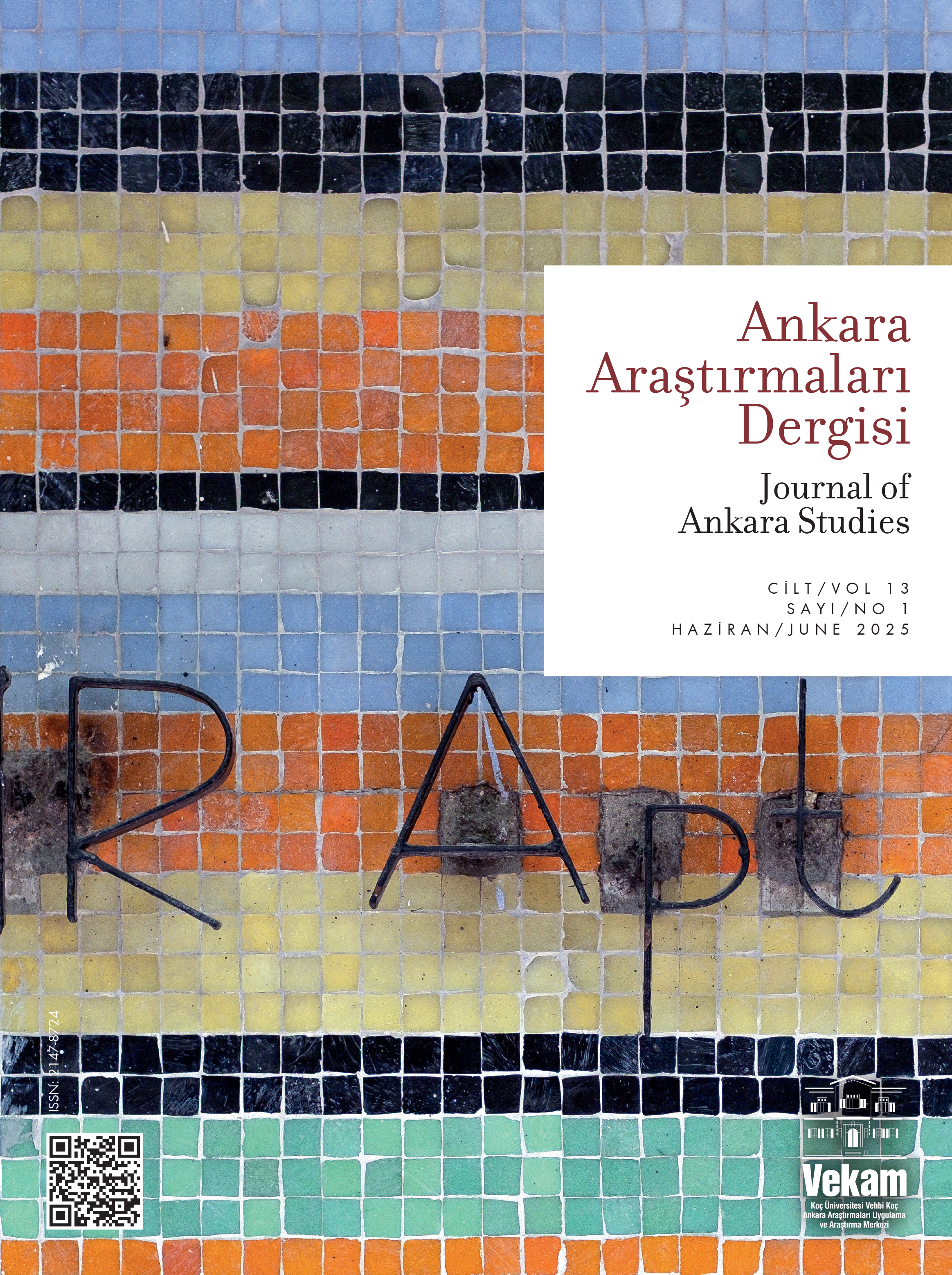Gordion’un Orta Çağ Dönemi Sırlı Seramikleri
Billur Tekkök Karaöz1, Deniz Tamer2, Ebru Tamer31Başkent Üniversitesi, Güzel Sanatlar, Tasarım ve Mimarlık Fakültesi, SBE Sanat Tarihi ve Müzecilik Ana Bilim Dalı, Ankara, Türkiye2Kültür ve Turizm Bakanlığı, Ankara, Türkiye
3Selçuk Üniversitesi, Sosyal Bilimler Enstitüsü, Klasik Arkeoloji Anabilim Dalı, Konya, Türkiye
Çalışmanın konusunu, Frigya’da yer alan Gordion’un ST (South Trench – Güney Yamaç), A4 (Area 4 – Alan 4) ve Op. 54 (Operation 54) açmalarından ele geçen sırlı seramikler oluşturmaktadır. Çalışmada yöntem olarak her bir açmanın ayrı ayrı buluntu dökümü yerine sır ve bezemelerin gösterdiği teknik özellikler altında form özelliklerine göre gruplandırma tercih edilmiştir. Ele alınan buluntularda belirtilenen seramik gruplarının hamur yapısı olarak benzer olanlarının form bakımından da kendi içinde tutarlı olduğu izlenmektedir. Form olarak Amorium Yukarı Şehir, Karacahisar Kalesi ve civarı, Anaia, Pergamon, Ephesos buluntuları ile de yakınlık gözlenmektedir. Ele geçen seramiklerin üretim yerleri konusunda daha ayrıntılı analizler gerekmekle birlikte, Gordion ve yakın coğrafyasının hem hammadde hem gelenek olarak üretici olma potansiyeli yüksektir. Gordion kazılarında ortaya çıkarılan kontekstlerden ele geçen seramik buluntuları, Beylikler Dönemi’ndeki yerleşimin konumu ve kullanım amaçları hakkında birçok veri elde edilmesini sağlamaktadır. Bu veriler üzerinden Gordion yerel halkının sosyoekonomik kimliğinin incelenmesi makalenin amacını oluşturmaktadır. Araştırmanın ana önceli Gordion’da Geç Antik Dönem’den sonra görülen kronolojik boşlukların (hiatus) belirlenmesi ve söz konusu iskân sürekliliğinin Beylikler Dönemi’ne ait kap formları üzerinden kesin kronolojisinin saptanması sorunsalıdır.
Anahtar Kelimeler: Geç Orta Çağ, Beylikler Dönemi, Frigya, Gordion, Sırlı seramiklerMedieval Glazed Ceramics From Gordion
Billur Tekkök Karaöz1, Deniz Tamer2, Ebru Tamer31Başkent University, Faculty of Fine Arts, Design and Architecture, ISS Department of Art History and Museology, Ankara, Türkiye2Ministry of Culture and Tourism, Ankara, Türkiye
3Selçuk University, Institute of Social Science, Department of Classical Archaelogy, Konya, Türkiye
This paper aims to present glaze ceramics recovered from ST (South Trench), A4 (Area 4), and Op.54 (Operation 54) trenches of Gordion in Phrygia. As a working method, instead of casting the finds of each trench separately, grouping them according to form characteristics under the technical features indicated by the glazes and decorations was preferred. It is observed that the ceramic groups discussed in this study are similar in terms of fabric and form. There is also a similarity with the finds from Amorium Upper City, Karacahisar Castle and its surroundings, Anaia, Pergamon, and Ephesus. Although more detailed analysis is required regarding the production locations of the ceramics discovered, Gordion and its nearby geography have a high potential to be a production center. Pottery sherds unearthed from the contexts of Gordion excavations enable us to obtain data about the location and purposes of use of the settlement in the Principalities Period. The article’s purpose is to examine the socio-economic identity of the local people of Gordion through this data. The main premise of the research is the problem of determining the chronological gaps (hiatus) seen after the Late Antique Period in Gordion and determining the exact chronology of the settlement continuity through the vessel forms belonging to the Principality Period.
Keywords: Late Middle Ages, Principality Period, Phrygia, Gordion, Glazed ceramicsMakale Dili: Türkçe













